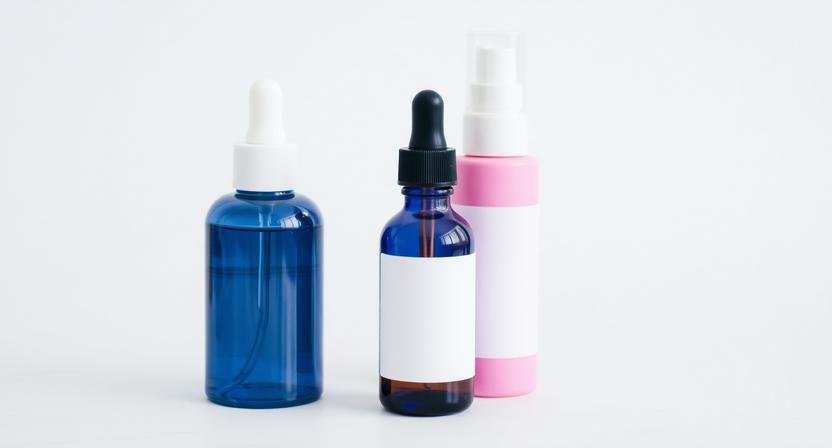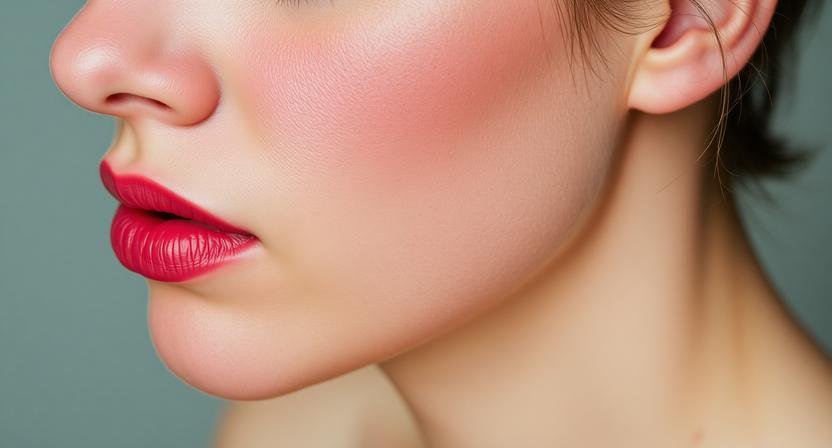How to Reduce Facial Redness

Face looks flushed when you did not plan on it. Cheeks sting after a gentle wash. A new serum turns your nose pink in minutes. Redness happens for many reasons, yet the path to calmer skin is simple once you know the levers to pull. This guide keeps things practical and easy to follow, so you can build a routine that lowers flare-ups and keeps your face steady through weather, workouts, and busy days.
What Facial Redness Really Is
Redness is visible blood flow in tiny vessels near the surface. Sometimes it is a quick blush from heat or stress. Sometimes it is ongoing. You might see scattered patches, a ring around the nose and mouth, or a uniform flush across the cheeks. Causes vary. Common drivers include a weak moisture barrier, harsh cleansing, fragrances, hot water, overuse of acids or retinoids, sun exposure, spicy food, alcohol, and hot rooms. Rosacea, eczema, and contact dermatitis also show up as redness, and they can sit on top of oily or dry skin alike.
You do not need a full diagnosis to start feeling better. First calm the barrier. Then add smart habits around triggers. Finally, use a few proven actives at a gentle pace.
Your Calm-First Routine
Morning
Cleanse with lukewarm water or a very gentle cleanser. If your skin feels fine on waking, a rinse is enough.
Hydrate with a simple serum that lists glycerin, panthenol, or aloe high on the label.
Seal with a fragrance-free moisturizer that includes ceramides and cholesterol. That combo supports the skin’s “mortar.”
Protect with a sunscreen you can wear daily. Look for light textures and soothing add-ons like niacinamide.
Night
If you wore sunscreen or makeup, remove with a balm or oil, then wash with the same gentle cleanser. Less rubbing means less redness.
Moisturize again. If you are using an active like azelaic acid or a retinoid, apply a thin layer of moisturizer first, add the active, then another thin coat to buffer. This sandwich slows sting without killing results.
Keep this rhythm for two weeks. Most faces look calmer just from these basics.

Ingredients That Help Redness
Niacinamide
A quiet multitasker. It supports the barrier, reduces the look of redness over time, and plays well with most formulas. Start around two to five percent if you are sensitive.
Azelaic Acid
Calms visible redness and helps with texture and post-blemish marks. Ten percent is a friendly starting point. Use at night three to four times per week, then build.
Panthenol and Glycerin
They pull water into the surface so skin feels soft instead of tight. Hydrated skin flushes less.
Ceramides, Cholesterol, Fatty Acids
The lipid trio your barrier loves. In creams and gel-creams, they fill the gaps and cut down on day-long prickly sensations.
Centella Asiatica, Madecassoside, Allantoin, Colloidal Oat
Comfort ingredients. They do not replace sunscreen or prescription care, yet they take the edge off fast.
If you already use a retinoid for acne or texture, keep it, but slow down. Two nights a week with a moisturizer sandwich beats nightly sting.
Things That Often Make Redness Worse
Hot Water
Feels great, removes lipids fast. Switch to lukewarm. Your face will flush less.
Fragrance and Essential Oils
Lovely in candles, loud on fragile skin. If you are flaring, go fragrance-free for a month.
Over-Exfoliation
Daily strong acids and harsh scrubs thin the surface and expose sensitive nerve endings. Choose one lane. Either a gentle chemical exfoliant once a week or a retinoid two nights a week to start, not both at full tilt.
Alcohol-Heavy Toners
They give instant lightness and long-term sting. If your moisturizer tingles on contact, check your toner first.
Rough Towels and Brushes
Friction equals redness. Pat dry. Apply with hands or soft tools. Clean tools often.

Patch Testing, The Simple Way
New does not have to mean risky. Put a little product on the side of your neck or along the jaw for two nights. Watch for burning, rash, or bumps. If nothing happens, try one cheek for one night. Only then go full face. Start every third night. Move to every other night if you are calm after two weeks. This small pause saves you from mystery flares.
Sun, Heat, And Weather
UV light makes redness worse and slows recovery. Wear sunscreen daily, even near windows. Heat also pushes blood toward the surface. On hot days, use lighter layers, give products time to set, and carry a mini mister with plain water to cool skin without rubbing. Wind and low humidity pull water out fast. In winter, use thicker layers at night, run a humidifier, and apply moisturizer within a few minutes after showering while skin is still slightly damp.
Food, Drinks, And Exercise
You do not need to cut joy from life, only notice patterns. Spicy food, very hot drinks, and alcohol can trigger flush in some people. If you suspect a link, run a short experiment. Cut one likely trigger for two weeks. Track changes in a note on your phone. Bring it back and see what happens. For exercise, cool the room if possible, skip thick layers pre-workout, and rinse with lukewarm water after. A light, fragrance-free moisturizer applied right after helps shut down the post-sweat sting.
Shaving And Hair Removal
Shaving scrapes the surface, so treat it like a mini procedure. Use a fresh blade, shave after a warm (not hot) shower, go with the grain, and rinse with cool water. Apply a fragrance-free gel-cream with ceramides when you finish. If you wax or thread, pause strong actives for two to three days around the appointment and use a calming lotion after, not an astringent.
Makeup Tips For Redness
Base can help without feeling heavy. Choose light to medium coverage with a natural finish. Dot foundation only where you need it and tap with a damp sponge. If color correction helps your mood, a thin green-tinted primer can neutralize pink areas, yet go easy. Thick coats fight your skincare and crease by lunch. Set only where you move most, under eyes and around the nose. Avoid heavy baking. Powder can highlight texture if you are dehydrated. A quick mist once your base is done fuses layers and softens edges.
A Seven-Day Calm-Down Plan
Day 1
Lukewarm cleanse, hydrating serum, barrier moisturizer, sunscreen. Night, double cleanse if needed, barrier moisturizer only. Sleep.
Day 2
Repeat morning. At night, add niacinamide under moisturizer if you tolerate it. If you feel prickly, skip extras.
Day 3
Same morning. Night, try azelaic acid as a pea-size all over or only on pink areas. Moisturizer after.
Day 4
Back to basics. Cleanse, hydrate, moisturize, protect. If you are itchy or warm, place a cool compress for a minute, then reapply moisturizer.
Day 5
If you stayed calm, keep azelaic or niacinamide in rotation. If you flared, remove the last new step and park it for a week.
Day 6
Test your normal makeup stack. If pilling shows up, you are using too much or layering too fast. Thin layers, one minute waits, tap do not rub.
Day 7
Review your notes. Any food or heat triggers this week. Keep what worked. Plan the next two weeks with the same simple rhythm.
When Redness Might Be Rosacea
Rosacea does not always look the same. It can be constant flush, visible capillaries, stinging in wind, acne-like bumps with little white heads, or eye irritation. Triggers include heat, sun, stress, spicy food, and alcohol. If you see a pattern, or if redness persists despite a gentle routine for a month, see a dermatologist. Prescription options like topical azelaic acid at higher strengths, ivermectin, metronidazole, or brimonidine can help. Laser or light therapies reduce visible vessels and background flush. Your daily routine still matters alongside medical care.

Eczema, Contact Dermatitis, And Allergies
Random rash patches, intense itch, oozing, or crusting point away from simple sensitivity. Common triggers include fragrance mixes, certain preservatives, nickel on glasses, and even botanical oils. Patch testing with a dermatologist can identify the culprit. In the meantime, strip your routine to a gentle cleanser, a fragrance-free ceramide moisturizer, and sunscreen. Once the skin is quiet, add products slowly, one per week.
Products To Keep Around
A gentle, creamy or milky cleanser for morning and night
A hydrating serum with glycerin, panthenol, or hyaluronic acid
A barrier moisturizer with ceramides and cholesterol
A friendly sunscreen you can wear daily
An azelaic acid or niacinamide treatment for tone and redness
One thicker comfort cream for windburn, post-procedure, or over-exfoliation weeks
Smart Order And Timing
Apply from thinnest to thickest. Give each layer a short pause to set. In the morning, that might be cleanse, hydrating serum, moisturizer, sunscreen, then makeup. At night, cleanse, optional treatment, moisturizer. If a product pills, you used too much, or the textures clash. Use a little less and wait a minute between layers. If sting pops up, buffer the active with moisturizer before and after.
Lifestyle Levers That Quiet Redness
Sleep steadies your nervous system and your skin. Aim for a calm pre-sleep routine and cool room. Hydration helps. Sip water through the day, not just at night. Manage stress in small ways that fit your life, a short walk, slow breathing, or two minutes of stretching. All reduce sympathetic nervous system spikes that show up as sudden flush.
Textiles matter. Choose softer pillowcases and avoid wool scarves right on the cheeks. Wash pillowcases often. Clean makeup tools weekly. Wipe your phone screen. Boring habits add up to calm skin.
The Bottom Line
Facial redness has many paths, yet your plan is simple. Be kind at the sink. Add water back and seal it in. Protect from sun and heat. Bring in gentle, proven ingredients like niacinamide and azelaic acid, and use actives at a pace your skin can live with. Notice triggers, then tweak. When your barrier feels safe, flushes happen less, stinging stops, and your face looks like itself again. Calm skin is not complicated, it is consistent. Start small today and keep going. Your cheeks will thank you.